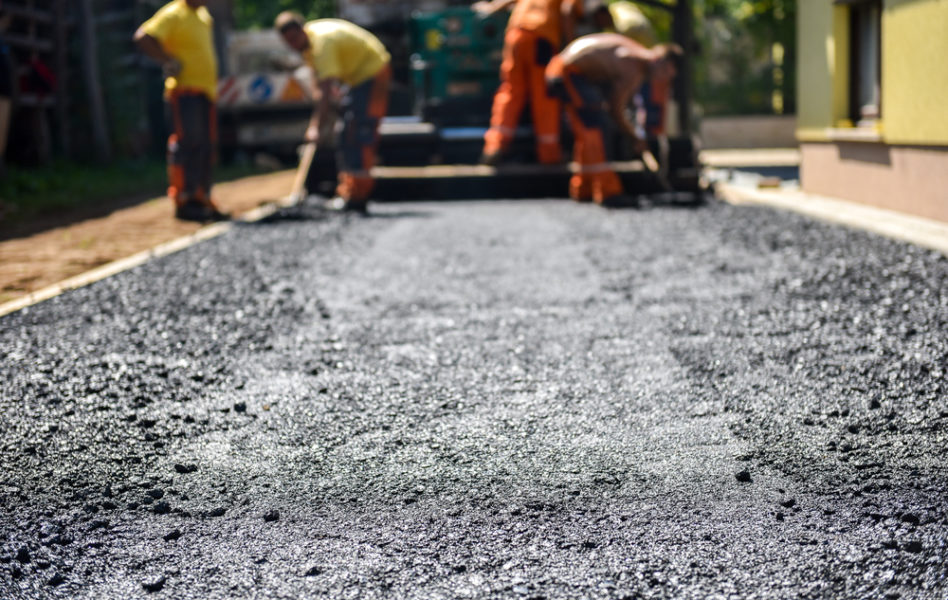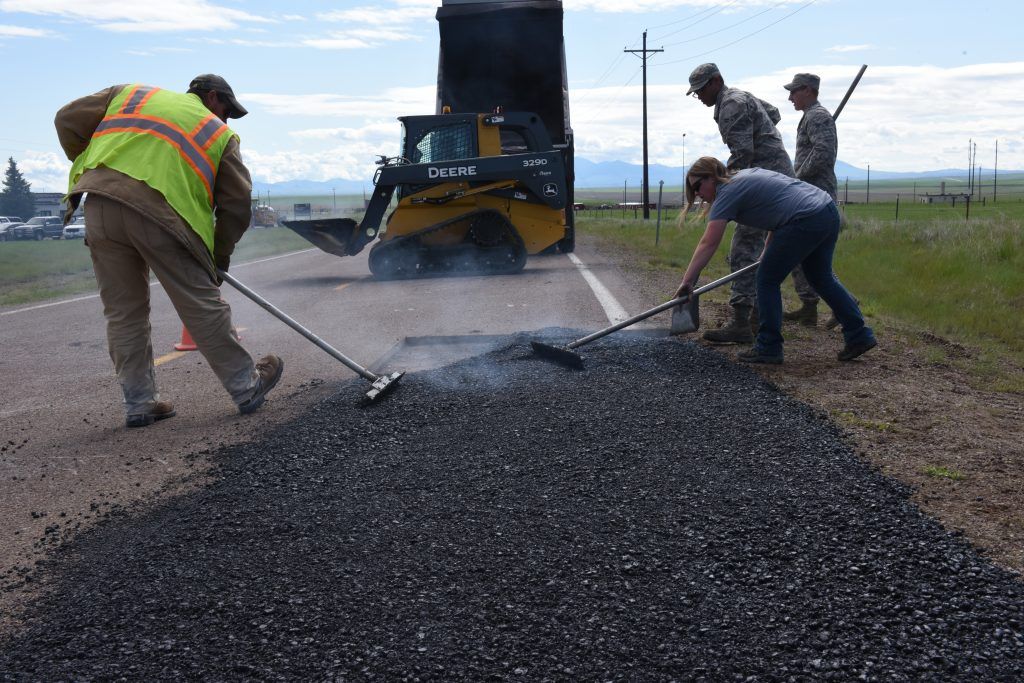Hot Mix Asphalt Paving: Redefining Business Residential Property Landscapes
Hot Mix Asphalt Paving: Redefining Business Residential Property Landscapes
Blog Article
Opening the Tricks of Hot Mix Asphalt Innovation
Checking out the midsts of warm mix asphalt innovation reveals a globe where thorough procedures and specific solutions merge to form our roadways and framework. The blend of accumulations, fillers, and binders isn't simply a building and construction task yet a critical orchestration of toughness and performance. As we peer into the elaborate dance of elements, a tapestry of strength and sustainability unravels. However what lies beneath this surface of asphaltic mastery, and what secrets wait to be revealed in the world of leading developments?
Relevance of Warm Mix Asphalt
Hot Mix Asphalt plays an important role in modern-day infrastructure advancement as a result of its sturdiness and cost-effectiveness. As the most generally made use of paving material for roads, freeways, and parking area, Warm Mix Asphalt provides a series of benefits that contribute to its significance in building projects. One crucial benefit is its ability to endure rush hour tons and rough weather, offering a trustworthy and lasting surface area for transport networks. Additionally, Warm Mix Asphalt is cost-efficient in both preliminary construction and long-term upkeep, making it a preferred choice for numerous facilities projects.
The durability of Warm Mix Asphalt stems from its make-up, which includes accumulations, binder, and filler materials that are carefully selected and mixed to meet details efficiency demands. This accurate mix leads to a versatile and solid pavement that can sustain regular usage without considerable deterioration. Hot Mix Asphalt is 100% recyclable, additional improving its sustainability and ecological advantages. On the whole, the importance of Warm Mix Asphalt in facilities growth can not be downplayed, as it proceeds to be a foundation of modern-day building and construction practices.
Parts of Asphalt Mixes
The structure of asphalt blends is composed of very carefully picked aggregates, binder, and filler products that are essential for attaining certain efficiency demands. Accumulations are the main part of asphalt mixes, providing toughness and stability. These accumulations can be natural, such as crushed rock or smashed rock, or synthetic, like recycled products from old pavements. The binder, normally bitumen or asphalt concrete, holds the aggregates with each other and gives adaptability and sturdiness to the mix. The option of the binder is essential as it straight affects the mix's performance in various weather conditions. Fillers, such as hydrated lime or Rose city concrete, are used to boost the mix's workability and aging resistance. Angled Parking.
The mix and percentage of these components play a significant duty in determining the top quality and efficiency of the asphalt mix. Designers very carefully develop the mix to meet particular demands, considering aspects like web traffic volume, climate problems, and pavement life-span. Proper choice and balancing of accumulations, binder, and fillers are essential for producing durable, durable asphalt pavements.
Mixing and Production Techniques

Once the accumulations are selected, the binder, often asphalt cement, is added to bind the products with each other. The binder's high quality and amount significantly affect the mix's versatility, stamina, and resistance to environmental aspects. In addition, fillers like hydrated lime or Rose city concrete may be integrated to enhance particular characteristics of the asphalt mix, such as its workability or dampness resistance.
During production, the accumulations and binder are heated, commonly between 250-325 ° F(121-163 ° C ), to help with mixing and ensure correct coating of the accumulations. The blending process has to be thorough to accomplish an uniform combination that advertises the wanted performance attributes of the asphalt. Numerous strategies, such as set blending i was reading this or drum blending, are used to accomplish high-quality and constant asphalt mixes for building and construction tasks.
Factors Influencing Asphalt Performance
Elements affecting asphalt efficiency encompass a variety of variables that influence the durability, longevity, and overall high quality of asphalt here are the findings pavements. One key factor is the quality of materials made use of in the asphalt mix.

Design considerations, such as sidewalk density and drainage, are crucial in ensuring the lasting performance of the asphalt sidewalk. By very carefully taking into consideration these factors, specialists and designers can enhance asphalt performance and boost the solution life of sidewalks.
Lasting Practices in Asphalt Technology

Furthermore, the growth of warm-mix asphalt (WMA) innovations has actually obtained traction in the last few years. WMA enables the manufacturing and placement of asphalt blends at reduced temperatures contrasted to typical hot-mix asphalt, resulting in lowered power usage and greenhouse gas emissions. In addition, the usage of porous asphalt mixes can assist mitigate stormwater drainage problems by permitting water to penetrate through the pavement and right into the ground, advertising natural water filtering and recharge procedures. By implementing these sustainable techniques, the asphalt industry can add to constructing an extra resistant and ecologically pleasant infrastructure network.
Conclusion
In final thought, hot click for more mix asphalt innovation plays a crucial function in modern-day framework advancement because of its sturdiness and cost-effectiveness. By thoroughly balancing components, using proper blending methods, and taking into consideration various factors, engineers can develop top quality asphalt mixes that withstand rush hour loads and harsh weather condition conditions. Welcoming lasting methods, such as using warm-mix technologies and recycled products, additionally enhances the environmental kindness of asphalt innovation.
Mixing and manufacturing strategies in warm mix asphalt innovation include the exact mix and processing of aggregates, binder, and fillers to develop a high-performance and long lasting asphalt mix.Factors influencing asphalt efficiency include an array of variables that affect the toughness, durability, and overall quality of asphalt pavements. Lasting practices in asphalt modern technology incorporate various initiatives intended at minimizing the environmental impact of asphalt manufacturing and paving processes. By including redeemed asphalt pavement (RAP) and recycled asphalt tiles (RAS) into new asphalt blends, the market can substantially decrease the usage of raw products and energy, while additionally reducing landfill waste.
WMA permits for the production and placement of asphalt mixes at lower temperatures compared to conventional hot-mix asphalt, resulting in minimized power consumption and greenhouse gas discharges.
Report this page